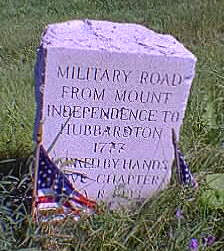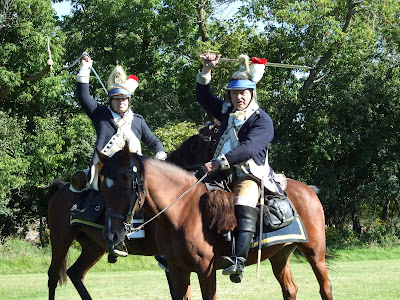 Did you know that in 1776-77 there was a Revolutionary War military road between Mount Independence in Orwell, Vermont, and Hubbardton, Vermont? On Sunday, September 12, from 2:00 to 5:00 pm, you can explore part of this little known military road by going on a guided hike at the Hubbardton Battlefield State Historic Site with long-time site interpreter Carl Fuller.
Did you know that in 1776-77 there was a Revolutionary War military road between Mount Independence in Orwell, Vermont, and Hubbardton, Vermont? On Sunday, September 12, from 2:00 to 5:00 pm, you can explore part of this little known military road by going on a guided hike at the Hubbardton Battlefield State Historic Site with long-time site interpreter Carl Fuller.
Fuller will lead a vigorous hike, starting from the museum and following traces of the old military road that led from Mount Independence to the Hubbardton Battlefield.
Hikers will see the area where the first shots of the battle were fired on July 7, 1777, and get a taste of what it might have been like for the soldiers traveling over this varied terrain. The event is one of many being held during September’s Vermont Archaeology Month.
Be prepared for hills. Dress for the weather, wear sturdy shoes or boots, and bring water. Admission is $2.00 for adults and free for children under 15, and includes visiting the museum.
The Hubbardton Battlefield State Historic Site preserves the location of the only Revolutionary War battle in Vermont. Soldiers from Vermont, Massachusetts, and New Hampshire fought in a savage rear guard action to halt General John Burgoyne’s British army and allow the main American army under Arthur St. Clair to withdraw southward to safety from Fort Ticonderoga and Mount Independence.
While the battle ended with the British holding the field, they were too battered to continue their pursuit and the rest of the colonial army escaped, paving the way for later victories at Bennington and Saratoga that turned the tide of the war.
The site is on Monument Hill Road six miles off VT Route 30 in Hubbardton or seven miles off exit 5 on US Route 4 in Castleton.
The site is open Thursday through Sunday, 9:30 to 5:00 p.m., and on Monday holidays, and Columbus Day, October 12, the last day of the season.
For more information about the program, call (802) 273-2282 or visit www.historicvermont.org/sites.






